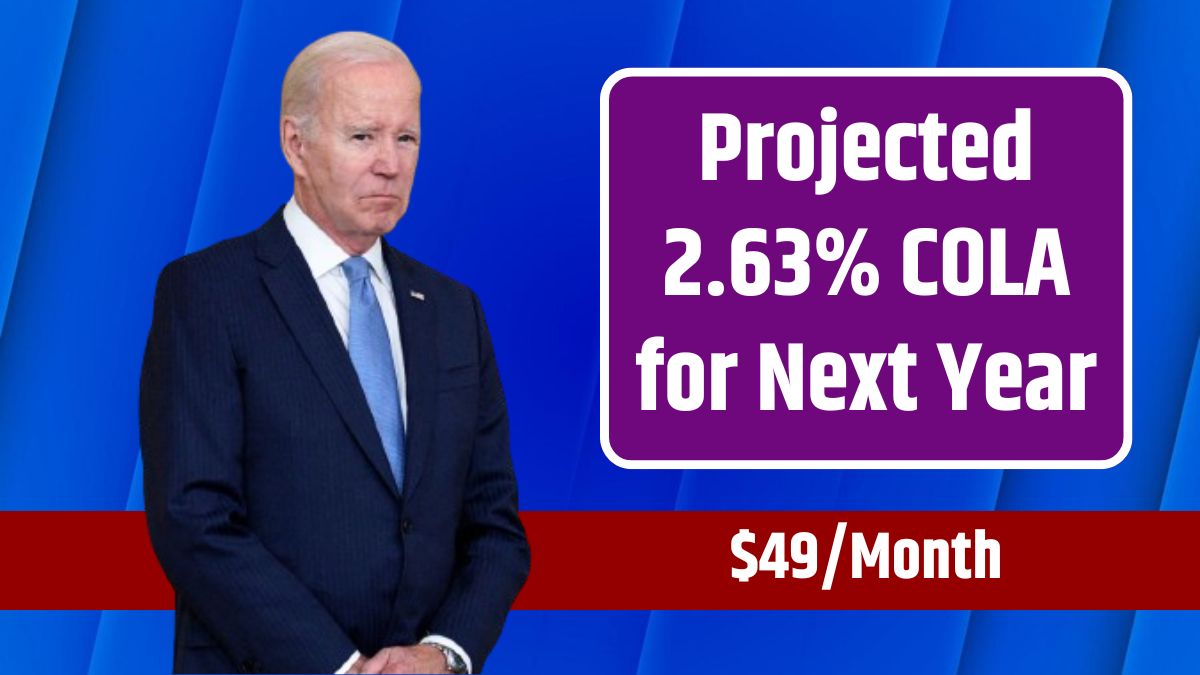As rumors about a $49 monthly Cost of Living Adjustment (COLA) increase for 2025 circulate, many recipients express dissatisfaction with the update. Here’s what you need to know about the projected COLA increase and its implications for retirees.
Millions of retirees rely heavily on Social Security benefits to cover their daily expenses. For approximately 60% of retirees, these benefits serve as a major source of income, while 28% consider them a minor source. The average annual cost of living for married couples with no children in the United States is around $60,000. This figure can vary based on lifestyle and personal preferences. Each year, pensioners eagerly anticipate the COLA, which aims to keep up with inflation by increasing benefits. However, this adjustment might not be as beneficial as hoped.
Projected Increase
For 2025, the Senior Citizens League estimates a 2.63% COLA increase, although the official number won’t be announced until October by the Social Security Administration. While any increase is welcome, it might not significantly impact retirees’ financial circumstances.
Since 2000, Social Security has lost 36% of its buying power, according to the Senior Citizens League. To purchase the same amount of goods and services as in 2000, pensioners today would need an additional $516.70 per month.
Adequacy
Currently, the average retired worker receives around $1,900 per month. If the 2025 COLA is indeed 2.63%, this would translate to an increase of roughly $49 more per month for the average retiree. Experts emphasize that $30,000 per year is the minimum for a single adult to live decently, but this varies based on location.
Unfortunately, this increase might not be sufficient to cover the rising cost of living. A study by the Senior Citizens League reveals that two-thirds of seniors saw their monthly expenses rise by 10% between 2022 and 2023.
COLA Updates
The 2.63% projected COLA for 2025 might not fully meet retirees’ needs. Although the COLA is designed to help recipients manage rising prices, it often falls short. Mary Johnson, a policy analyst at the Senior Citizens League, states, “The COLA is supposed to help seniors keep up with the price increase, but it is clear that it is not matching the real costs they are experiencing.”
Healthcare costs, a significant portion of retirees’ expenses, have been increasing faster than general inflation. This means that even with the COLA increase, seniors will struggle to afford their healthcare needs, reducing the COLA’s overall impact.
Key Insights
The gap between Social Security benefits and the actual cost of living is widening. Many senior citizens are finding it harder to make ends meet despite the annual adjustment meant to help them cope with inflation. As Mary Johnson pointed out, Congress needs to use a more accurate measure for COLA and implement policies that provide more meaningful increases to Social Security benefits.
Without these changes, retirees might continue to face financial challenges despite the annual COLA increase. Policymakers should consider updating how COLA is determined and look for ways to ensure that Social Security benefits keep pace with the true cost of living. Until these changes are made, retirees may face ongoing challenges as their benefits fail to meet their basic needs.
FAQs
How much is the projected COLA increase for 2025?
The projected COLA increase is 2.63%, approximately $49 more per month.
When will the official COLA for 2025 be announced?
The Social Security Administration will announce the official COLA in October.
What is the average monthly Social Security benefit in 2024?
The average monthly benefit in 2024 is around $1,900.
How much buying power has Social Security lost since 2000?
Social Security has lost 36% of its buying power since 2000.
Why is the COLA often insufficient for retirees?
The COLA often fails to match the real costs, especially healthcare expenses.
